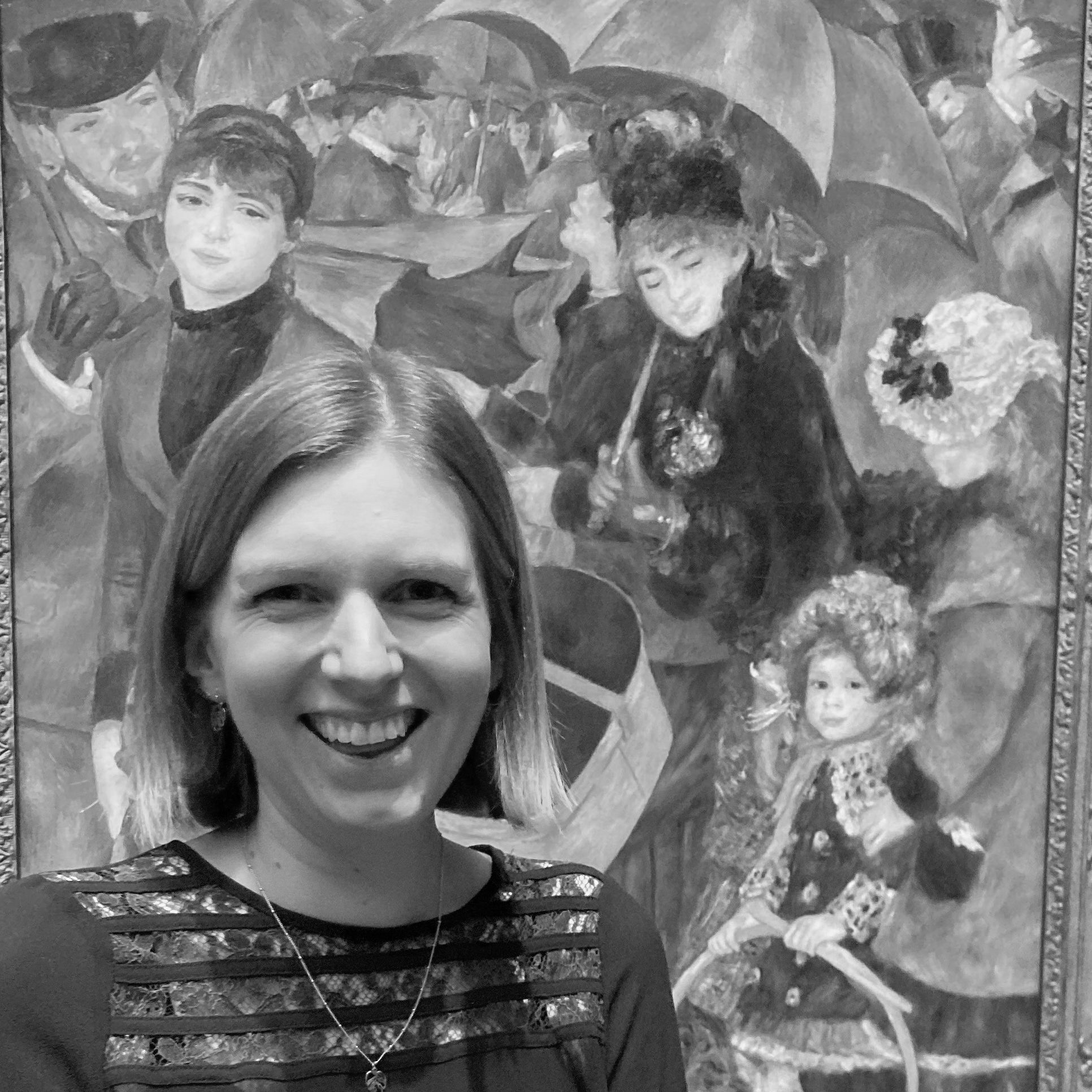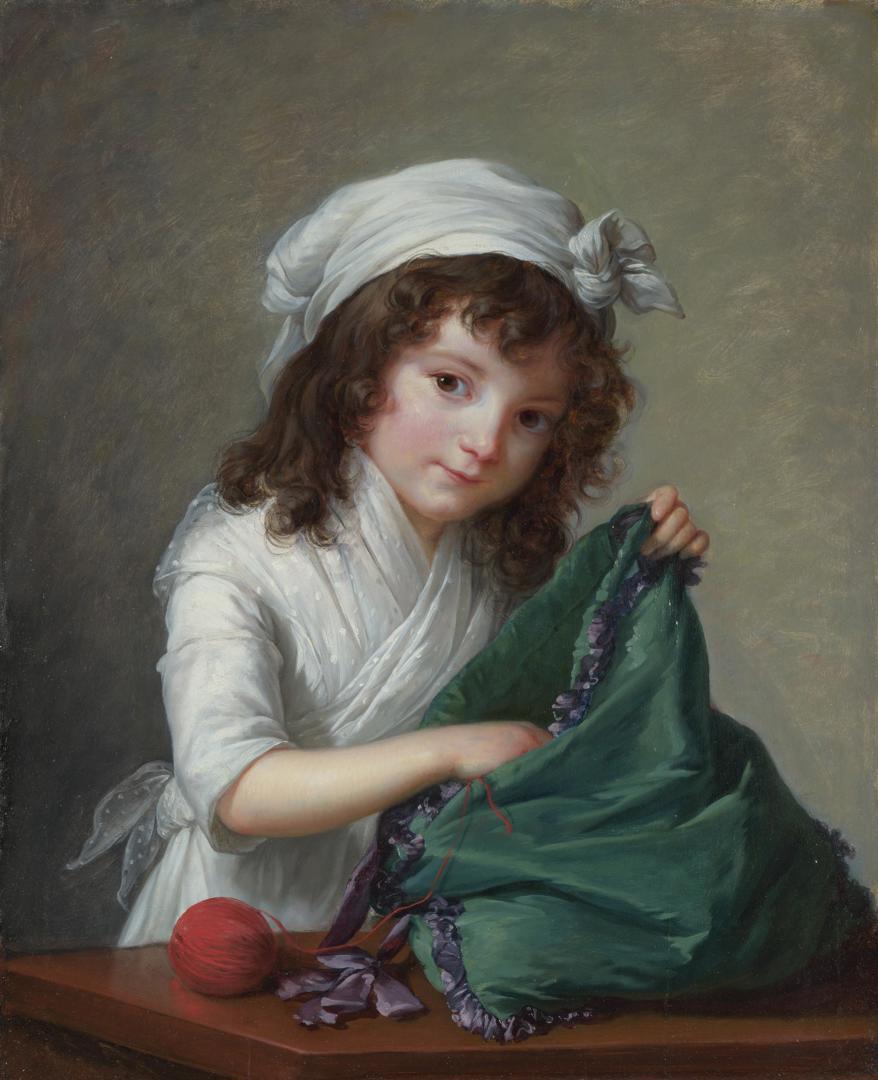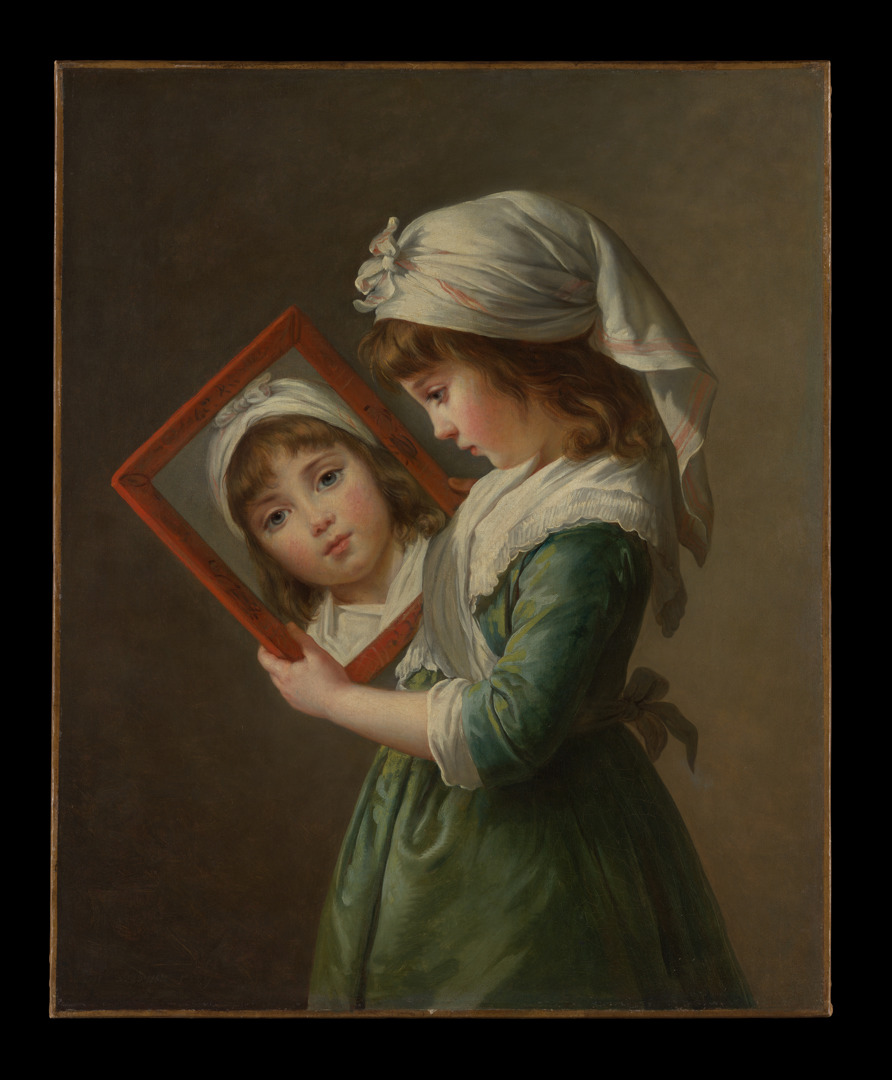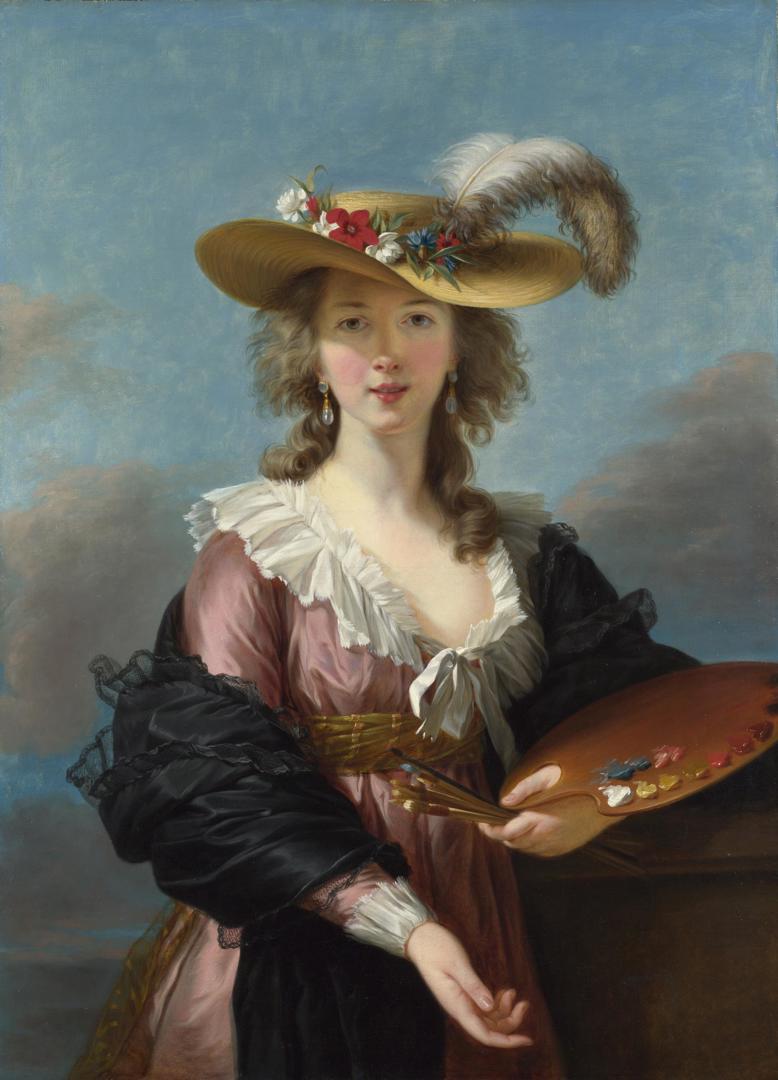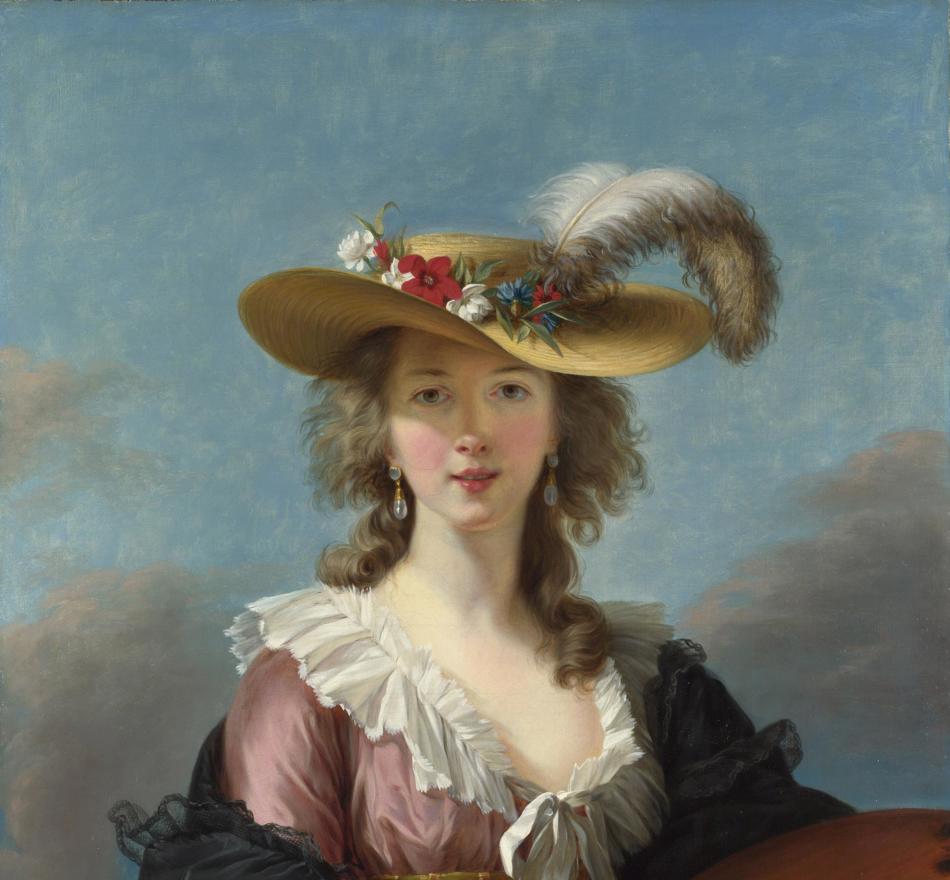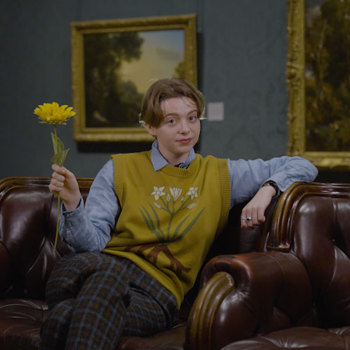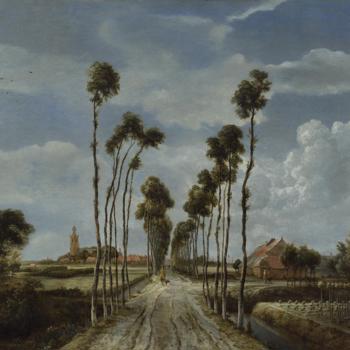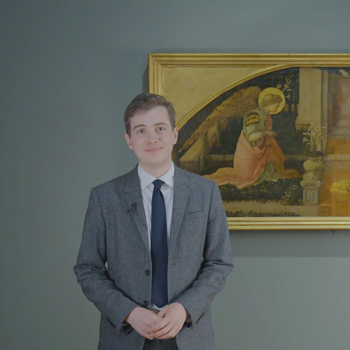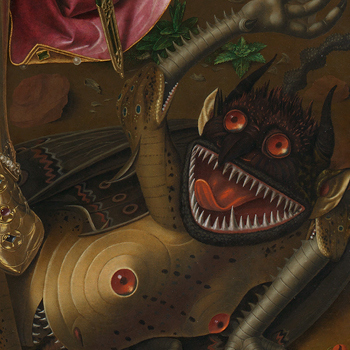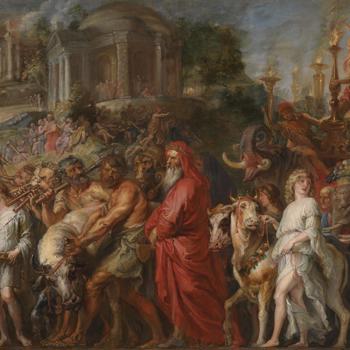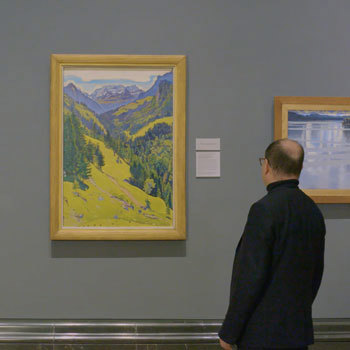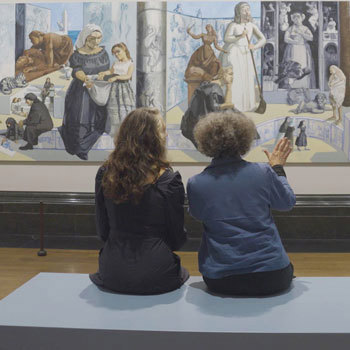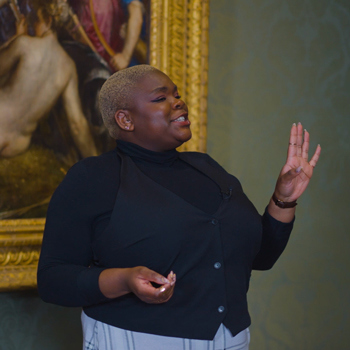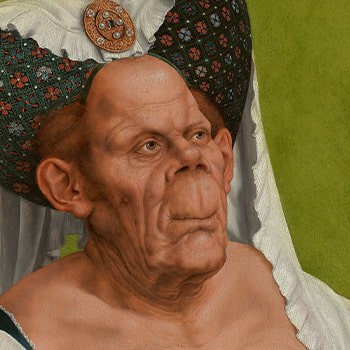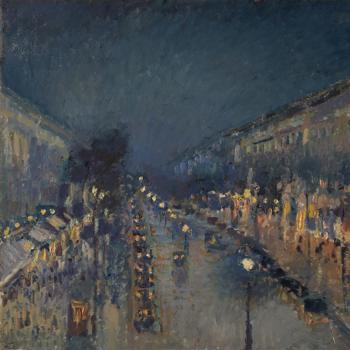Alexandrine-Emilie Brongniart has rather a grand name for a small child. But it’s not her family’s status in 18th-century France that first draws us in, it’s her lively and captivating gaze. She’s frozen in time, reaching into her bag for more yarn, yet curiously looking out of the frame. Is she inviting us in, to join her in her endeavour to pick a ball? Or has she been caught red-handed in her inquisitive act?
Emilie was the daughter of architect Alexandre-Théodore Brongniart, who was responsible for the Paris Stock exchange, and Anne-Louise d’Egremont. They had many artistic friends including the artist of this picture, Elisabeth Louise Vigée Le Brun, one of just a few women artists in our collection. Vigée Le Brun has an extraordinary story, that weaves in and out of the life of Emilie and her family, making both this picture and the artist worth celebrating.
Vigée Le Brun’s career is remarkable. At the age of 15, she was painting the aristocracy and at 19, she overcame having all her materials seized by authorities due to not having guild or academy membership. She was established at court by 20, and painted this picture in her early 30s.
Vigée Le Brun paints Emilie wearing an informal knotted scarf on her head and a matching dress. A delicate and translucent shawl is draped around her shoulders, showcasing Le Brun’s skill at capturing the qualities of fabric. Although she looks straight out of the picture, peering at us, she’s also busy searching in a green silk bag for a ball of yarn. Her hair is fashionably long and styled to look natural.
Gallery Educator Fiona Alderton talks about the painting as part of this tour:
This is a YouTube video player. Below the video are the title, view time and description. Below that is a carousel of video thumbnails. Clicking a thumbnail will load and play that video.
Childhood friends
Many similarities can be seen between this painting of Emilie from 1788 and one of Vigée Le Brun’s own daughter, ‘Julie Le Brun (1780–1819) Looking in a Mirror’ painted in 1787, and now in The Met’s collection in New York. The two girls would regularly play together, and their youthful curiosity is highlighted both in Emilie’s inquisitive look out of the frame, and the striking gaze of Julie, captured in the mirror in her hands. Julie is also pictured with an informal knotted scarf, while the green of her dress chimes with the green silk bag of her friend Emilie. It’s easy to imagine these two giggling in the corner, sharing stories and toys.
Both paintings present independent and enquiring young girls, and we might draw parallels between the youthful strength and conviction suggested in these portraits, with Vigée Le Brun’s own incredible life.
Vigée Le Brun
This strength of character was tested when Vigée Le Brun found herself leaving her husband, who was a gambler, and her country, which was facing revolution, in 1789. Whilst she’d seen success in the court of Marie-Antoinette, this was not the ideal position to be in at the start of the French Revolution.
This is where the Brongniart family step in. They helped Vigée Le Brun seek refuge in Italy, despite their own support for the Revolution. And three years later, Monsieur Brongniart was one of the 255 signatories who petitioned for Vigée Le Brun to be removed from the list of émigrés (aristocratic exiles who had fled France).
Whilst Vigée Le Brun‘s portrait of Emilie can clearly be appreciated for its artistic merit, it’s the story behind the painting that really captures the modern imagination. Much of what Vigée Le Brun did in the 18th century is admirable even from a 21st-century perspective. So, the next time these inquisitive eyes capture your attention, take a moment to think about the inspiring woman behind the brushstrokes.
Digital activity at the National Gallery is supported by Bloomberg Philanthropies Digital Accelerator



